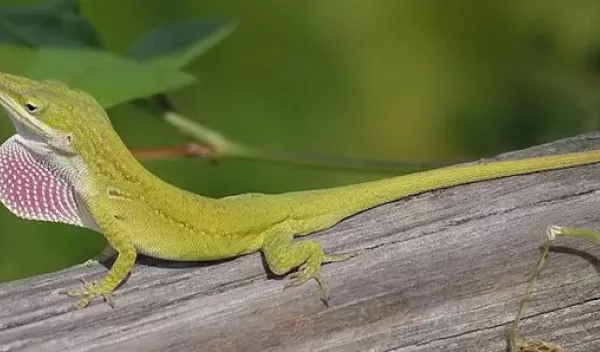
Islands are cauldrons of evolution
Islands are hot spots of evolutionary adaptation that can place species at a disadvantage when returning to the mainland, according to a study published in Proceedings of the National Academy of Sciences.
Islands are well-known locations of adaptive radiation, where species diversify to fill empty niches. In contrast, species that evolved on islands are thought to be evolutionarily disadvantaged when attempting to recolonize the mainland.
U.S. National Science Foundation-funded biologist Jonathan Losos of Washington University in St. Louis is the senior author of the new study. Losos and colleagues used a time-calibrated phylogeny and measurements of relevant traits of neotropical Anolis lizards to explore the collision of island and mainland adaptive radiations.
"This study is a good example of how careful tests of hypotheses can lead to advances in understanding fundamental evolutionary processes and help guide predictions for future changes in natural populations," said Kathryn Dickson, a program director in NSF's Division of Integrative Organismal Systems.
Anolis lizards originated in South America, colonized and radiated on various islands in the Caribbean and then returned and diversified on the Central American mainland. All the Anolis groups exhibited significant adaptive radiation, but the results suggest that they followed different evolutionary paths.
The island Anolis species, and to a lesser extent the ancestral species, experienced higher initial rates of evolution as ecological niches were filled. In contrast, the Anolis species that recolonized the Central American mainland from islands diversified ecologically without developing significant morphological differences between species.
When the Isthmus of Panama reconnected the two mainland groups, the recolonizing Central American Anolis species outcompeted the ancestral South American Anolis species. According to Losos, rather than being an evolutionary dead-end, islands are cauldrons of evolutionary innovation and diversification.
"The traditional thinking is that plant and animal groups that evolve on islands can't invade the mainland because the mainland has more species, and thus a more competitive biotic milieu," Losos said. "So, the idea is that species on islands aren't 'tough' enough to cut it on the mainland. In recent years, however, many studies have documented contradictory examples of island species successfully invading the mainland. Ours shows that island species not only can invade the mainland but can diversify greatly there."
